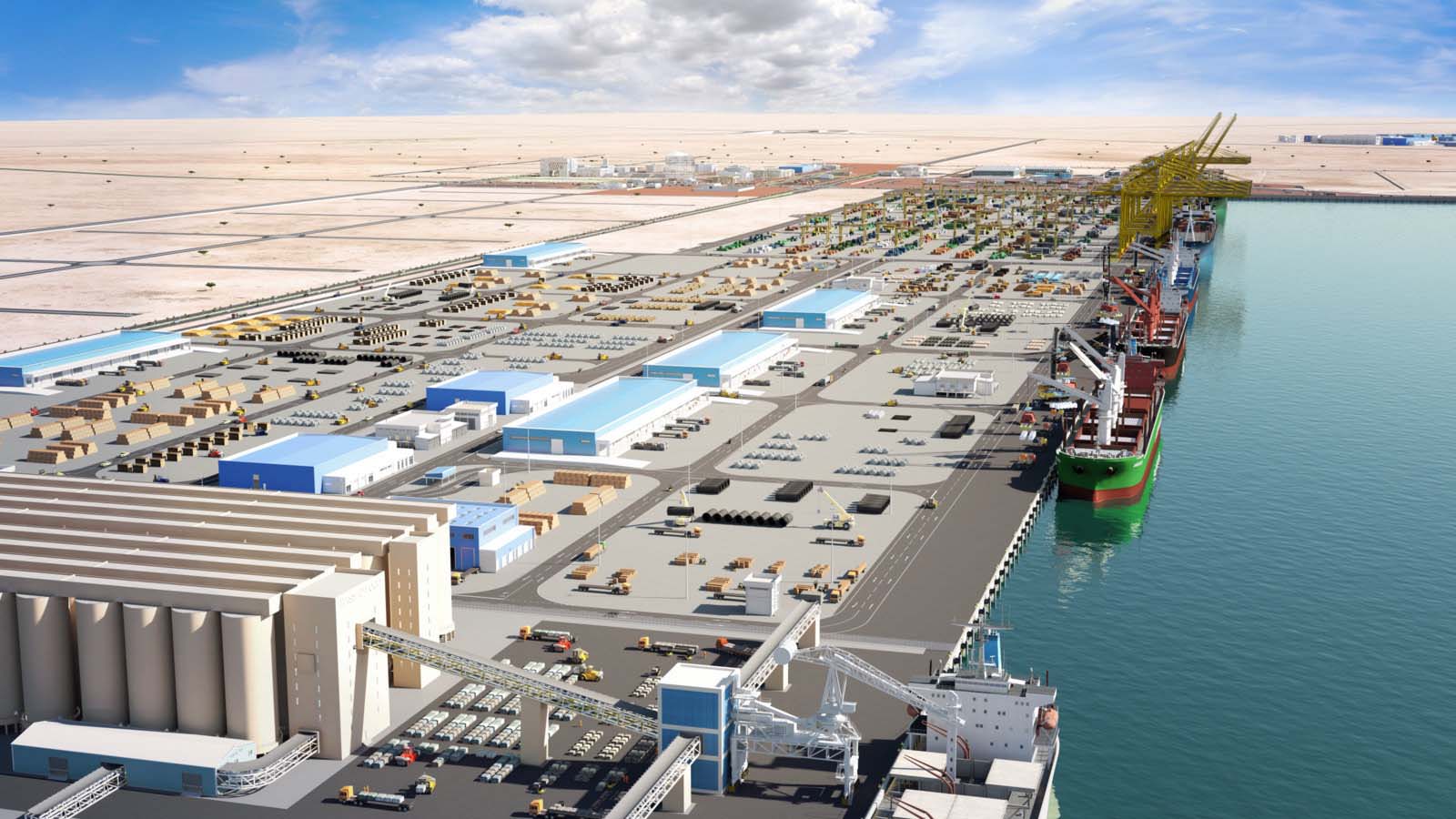
The launch of commercial shipping at the new Hamad Port this December will remove some 100 daily truck trips from the Corniche around the old Doha Port, officials have said.
By the end of this year, vessels carrying livestock and automobiles will start unloading at the new $7.4 billion (QR27 billion) port, which is located in Umm Al-Houl near Mesaieed.
Imports to Qatar have been rising in recent years. The Doha Port receives on average 12 livestock ships and 400 so-called roll-on/roll-off vessels – which allow automobiles and other cargo with wheels to be driven directly onto the dock – a year, according to the Qatar Port Management Co.
This requires 100 truck movements at the Doha Port each day that will be relocated when these ships begin heading to the new port in a few months, officials added.
“It’s going to de-congest the road network around the existing port,” Tim Verdon, the program director of the Hamad Port project and a vice-president at engineering firm Aecom told Doha News on the sidelines of the Qatar Transport Forum earlier this month.

Trucks entering and exiting Doha Port, near the Museum of Islamic Art, add to the traffic jams in central parts of the city and have been involved in accidents in the area, including a fatal one in May.
At that time, a British expat was killed after a shipping container fell from a truck onto his vehicle on the Corniche.
Port progress
Hamad Port intake of animal and automobile shipments will be a major milestone in the new facility’s development.
The port will eventually cover a site of around 20 sq km and include three container terminals, with an eventual combined annual capacity in excess of six million containers per year.

The port area will also house a new base for the Emiri Naval Forces and a special economic zone industrial area.
Container ships are expected to start using Hamad Port in mid-2016.
That should help relieve supply chain bottlenecks, particularly in Qatar’s overheated construction sector, which faces some of the highest supply costs in the region in part because of restrictions on the volume the current port facilities can handle.
Another current challenge is that the sea around Qatar is very shallow. Verdon said that many large vessels with shipments destined for Qatar must dock in Dubai, where the cargo is unloaded and then reloaded onto smaller boats for the journey to Doha.
But he noted that the massive amounts of dredging works, combined with the sheer size of Hamad Port, means this practice will eventually cease.
“We’ve designed all of the facilities for the biggest ships in the world,” Verdon said. “Ships will come directly here, not to Dubai.”

Hamad Port received its first ship in July, the heavy load carrier Zhen Hua 10, which was laden with 12 cranes that will be used to unload goods from ships.
It was followed by a second ship loaded with cranes that arrived in mid-August, port officials said, adding that a third vessel has already left China and is on its way to Qatar.
“We’re beginning to look like a port now,” Verdon said.
Thoughts?







